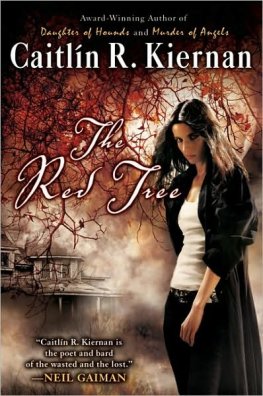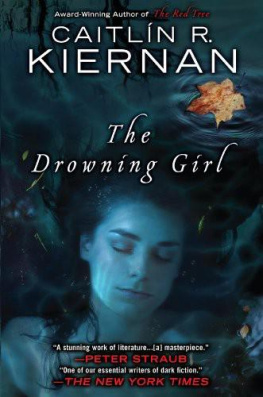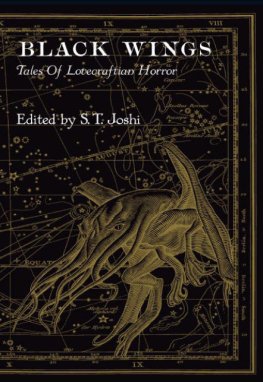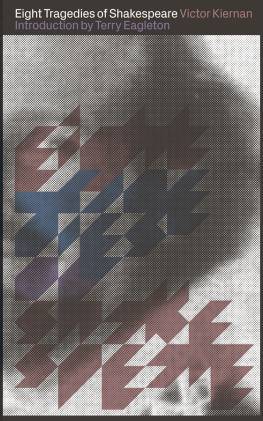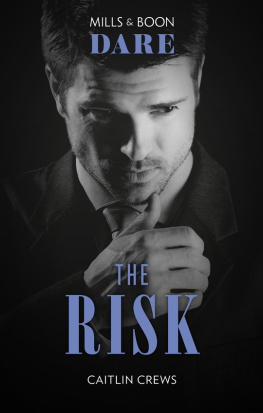Caitlin R. Kiernan - The Red Tree
Here you can read online Caitlin R. Kiernan - The Red Tree full text of the book (entire story) in english for free. Download pdf and epub, get meaning, cover and reviews about this ebook. genre: Science fiction. Description of the work, (preface) as well as reviews are available. Best literature library LitArk.com created for fans of good reading and offers a wide selection of genres:
Romance novel
Science fiction
Adventure
Detective
Science
History
Home and family
Prose
Art
Politics
Computer
Non-fiction
Religion
Business
Children
Humor
Choose a favorite category and find really read worthwhile books. Enjoy immersion in the world of imagination, feel the emotions of the characters or learn something new for yourself, make an fascinating discovery.
- Book:The Red Tree
- Author:
- Genre:
- Rating:4 / 5
- Favourites:Add to favourites
- Your mark:
- 80
- 1
- 2
- 3
- 4
- 5
The Red Tree: summary, description and annotation
We offer to read an annotation, description, summary or preface (depends on what the author of the book "The Red Tree" wrote himself). If you haven't found the necessary information about the book — write in the comments, we will try to find it.
The Red Tree — read online for free the complete book (whole text) full work
Below is the text of the book, divided by pages. System saving the place of the last page read, allows you to conveniently read the book "The Red Tree" online for free, without having to search again every time where you left off. Put a bookmark, and you can go to the page where you finished reading at any time.
Font size:
Interval:
Bookmark:
Caitlin R Kiernan
The Red Three
EDITORS PREFACE
I have visited the old Wight Farm and its red tree, there where the house squats ancient and neglected below the bogs that lie at the southern edge of Ramswool Pond. So, I have been. I have seen it for myself, but just once. Having accepted the task of editing The Red Tree for posthumous publication, it seemed, somehow, like a necessary pilgrimage. A sort of duty, required of me if I were to gain any insight at all into Sarah Crowes state of mind in those last months of her life. So, I went, and I even went alone.
I made the drive up from Manhattan in the spring, many months after receiving the typescript. The day was bright and crisp, a cider day in late April, the sky laid out wide and blue, and the land just beginning to go green with the first signs of spring. There was nothing the least bit foreboding about that day, but already my expectations had been colored by the pages of a suicides long ordeal and confession, and by the secret history of the Wight place that Sarah had discovered in yet another manuscript, this one having purportedly been left behind by the farmhouses previous tenant, a man who, as it happens, had also died there, half a decade before her arrival. The day of my visit fell, almost precisely, one year subsequent to Sarahs arrival at the farm in April of 2008.
I will endeavor to keep this brief, as it is not my story being told here. I am, at most, that storys reluctant caretaker.
After an early lunch in Providence with a college acquaintance Id not seen in some time, I took Route 6 west out of the city, past North Scituate, then, at the intersection with State 102, I turned south, through Chopmist and Rockland, crossing the Ponaganset River where it spills into the great gullet of the Scituate Reservoir, then drove on to Clayville and the Plainfield Pike. At the Providence- Kent county line, I turned northwest onto Moosup Valley Road. I was unfamiliar with this part of the state I largely still am and allowed myself to spend an hour or so looking about a couple of cemeteries in Moosup and the old church (ca 18641865) now claimed by a congregation of the United Church of Christ. I also had a look about the Grange Hall and the Tyler Free Library (the latter, ca 18961900), before continuing on to the intersection with Barbs Hill Road, just west of town.
The road is kept up moderately well, as there are many homes and farms spread out along its length, but it does change over from asphalt to tar-and-chip almost immediately. The turnoff to the Wight Farm is located just past a small pond, no more than a sixth of a mile from the north end of Barbs Hill Road. Surprisingly, unlike many of the assorted side roads, driveways, and footpaths, it isnt gated. Id rented a Jeep Cherokee for the trip; otherwise, Id never have made it much farther than the Blanchard place. The Blanchard family has owned the Wight Farm since 1979, and Id cleared my visit with them the week before, explaining that I was editing Sarah Crowes final book and needed to see the house where shed lived while writing it, which also happened to be the house where shed died. Mr. Samson Blanchard, her former landlord, was neither as curious nor as suspicious as Id expected from my scant, secondhand knowledge of the Yankees of western Rhode Island. I gave him my publishers contact information, but, later, Id discover that he never even made the call. I credit this, in part, to the fact that the Blanchards suffered virtually no media attention following Sarahs death. And, oddly (or so it seems to me), there is little evidence that local teens and other curiosity seekers have targeted the Wight Farm for nightly visitations, vandalism, or, to employ the vernacular of folklorists, legend-tripping.,I find the general absence of urban myth surrounding the farm nothing short of remarkable.
The afternoon was growing late as I bumped and bounced my way along the narrow, winding path leading south and east through the woods to the Wight place. I couldnt drive the whole way, as the road dead-ends and theres a turnaround less than two hundred feet from the house itself. I parked there, then crossed an alarmingly rickety wooden bridge on foot. It fords the unnamed creek that flows out of Ramswool Pond, joining other streams off towards Vaughns Hollow, before finally emptying into Briggs Pond after half a mile or so. Most of the trees here are oak, of one sort or another, interspersed with white pine, hickory, and red maple, and they threw long shadows across the clear, slow-moving water. The weedy banks were thick with reeking growths of skunk cabbage, the fleshy, purplish flowers open to attract bees and stoneflies. I noted the fading daylight, the late hour, and so walked quickly on to the house itself.
I wish I could say that during the two hours I spent poking about the place I felt some disquieting supernatural presence, a demonic or preternatural threat, or that I witnessed anything at all I am now unable to explain. Im sure, if I had, this would make a far more interesting and satisfying preface to what follows. But the truth is, I didnt. Beyond a general air of loneliness and the dim melancholy that such locales have always elicited from me, I didnt feel much at all. I had honestly expected to find the visit unnerving, and had even considered delaying it a week until my husband could accompany me.
Mr. Blanchard had mailed me the keys to the house, and I went inside and walked through all the rooms of the house, one by one. It was still furnished with an assortment of antiques and junk, just as it had been when Sarah took up residence there. I saw the manual typewriter shed produced her manuscript on, the same typewriter that had supposedly been used to type out the older manuscript shed eventually found. I went up to the small attic, which, according to Sarah, was used that summer as a studio by the painter Constance Hopkins, before Hopkins returned to Los Angeles.The house was cold and dank and smelled musty, but no more or less so than any very old house built on such boggy land would after standing uninhabited for so many months.
I did not enter the enormous basement, as Id forgotten to bring a flashlight, and Blanchard had not gone to the trouble and expense of having the power turned on just for the sake of my brief visit. However, I will say that I very much wanted to go down those flimsy stairs and see how much truth there was (or wasnt) to what Sarah had written about the space below the house. It seems, to me, to lie very much at the heart of the matter. I stood at the basement door, and I even opened it, gazing down into that solid, formidable darkness, smelling the fetid air wafting up from below. But I am not the least bit ashamed to admit you couldnt have paid me enough to make that descent alone. The basement is a mystery I will leave for someone else to answer, some more intrepid soul, a would-be Lara Croft or Indiana Jones.
After the house, I peeked into the sagging, dilapidated barn, and a couple of the other outbuildings, before following one of the fieldstone walls seventy-five yards or so to that enormous red oak,dwarfing all other trees in the vicinity. I will not here waste time describing the tree itself, as Sarahs manuscript does a far better job of that than I ever could. The branches seemed very stark that day, very grimly drawn against that April sky, despite a cheery spray of new leaves coming in. But, again, Id cite my expectations, more than any objective attribute of the tree itself, as the source of this impression. Here and there, names and dates had been carved into the bark. The oldest that I spotted was from 1888 (which Sarah also mentions), but there may well have been much older graffiti that I missed.
Set out about the circumference of those gnarled roots, I found many dozens of small glazed ceramic figurines, mostly of the exact sort one gets free inside boxes of Red Rose teabags.There were animals, circus performers, and characters from nursery rhymes, some balanced on the knotty wood, or tucked into crevices in the bark, others set out on the mossy ground surrounding the oak. It was an unexpected and startling sight, and I stood there for some time, studying the figurines. I did not take any of them away with me, or even touch them, thinking that, perhaps, they had been left here by the Blanchards grandchildren, who I understand frequently visit and have been known to wander as far as the Wight place. There was something reminiscent of a shrine or reliquary in the arrangement of the tiny ceramic animals, which are never mentioned in Sarah Crowes manuscript. I assume, therefore, that they were placed here following her death. Id forgotten my camera that morning, so I am forced to rely on memory, but two of the figurines I recall quite clearly a sepia-colored rabbit and a pinkish wild boar, both date back to the very first American series of animal figurines offered by Red Rose Tea (19831985). At any rate, dusk was coming on fast, and I still had to cross the rickety bridge and then navigate the rutted dirt path leading back to Barbs Hill Road and Moosup Valley. By the time I got to the Jeep, the air was filled with the eerie calls of owls and other night birds, and I was glad that I had not lingered longer at the red oak. I made it back to New York around ten-thirty that evening.
Font size:
Interval:
Bookmark:
Similar books «The Red Tree»
Look at similar books to The Red Tree. We have selected literature similar in name and meaning in the hope of providing readers with more options to find new, interesting, not yet read works.
Discussion, reviews of the book The Red Tree and just readers' own opinions. Leave your comments, write what you think about the work, its meaning or the main characters. Specify what exactly you liked and what you didn't like, and why you think so.

